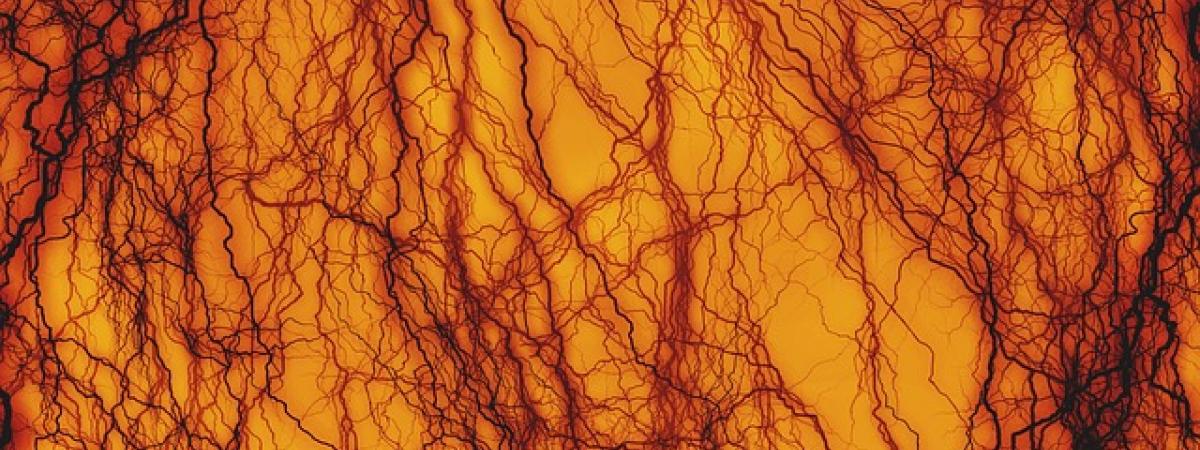Avastin: the cure for bowel cancer and blindness?

A drug called Avastin has been shown to be helpful in increasing survival from some forms of bowel cancer, and in restoring vision in some cases of poor eyesight. How can the same drug treat such different conditions? The answer lies in Avastin’s action on your blood vessels.
Your circulation - the tree of life?
In his controversial Body Worlds exhibition (featured in the remake of Casino Royale), the German anatomist Dr von Hagens displays perfect castings of the entire network of blood vessels in a human body, looking rather like a magnificent tree with millions of branches. Centuries before, in a botanically-inspired painting, Leonardo da Vinci depicted ‘branches and roots’ (blood vessels) ‘growing out’ from the heart.
Even today anatomists refer to the ‘arterial tree’ and its ‘branches’ when talking about the circulation. And the amazing thing is that, just as pruned roses shoot forth new branches every Spring, new capillaries can grow out from existing blood vessels: essential in pregnancy and wound healing.
Sometimes, however, branches can grow where they are not wanted. Tumours especially are known to secrete a protein that encourages new branches to grow. In this way, the blood supply to the tumour is increased, helping the tumour to grow and spread.
Blood vessel branches can also grow behind the eye, where they can leak blood, damaging the eye and reducing vision in a condition known as wet age-related macular degeneration.
Pruning the branches with Avastin
Avastin blocks the proteins that make the blood vessel branches grow. In this way, tumours are starved of oxygen and their growth is slowed. It is a unique approach to cancer treatment since it targets the blood vessels, not the cancer directly: chemotherapy is often used alongside Avastin to kill the tumour cells.
So far, Avastin is approved for use in colon, lung, kidney, ovarian and some brain cancers, and many trials continue into other cancers. Its usefulness in breast cancer seems to depend on the chemotherapy that it is paired with.
Pruning unwanted blood vessels behind the eye has been shown to improve vision in patients with wet macular degeneration, and possibly other eye conditions such as those associated with diabetes. Surprisingly, Avastin is not yet officially licensed (though is often prescribed) for this use: the media recently reported that only a more expensive version of the drug is currently recommended by the NHS. This is despite the fact that the World Health Organisation lists Avastin as an eye medicine in its ‘Essential Medicines’ list.
Pruning, training and topiary
The Royal Horticultural Society has expert advice on how to manage the branches in your garden, with rewards including abundant flowers, healthier plants and a tidier garden. Avastin will continue to be used to prune unwanted blood vessels to help fight cancer and eye disease.
Paradoxically, drugs could also be made to increase branching in areas of poor circulation to help recovery from heart attacks and leg ulcers. Topiary may no longer be the preserve of gardeners: drugs such as Avastin may shape and fashion our blood vessel networks to improve our health.
